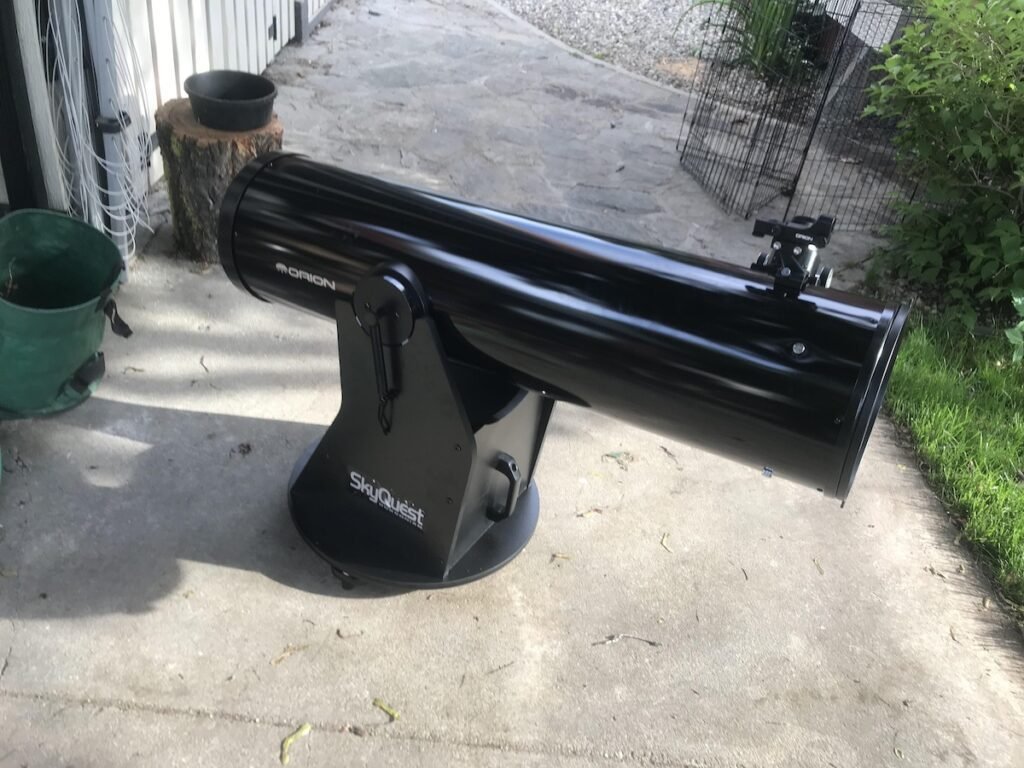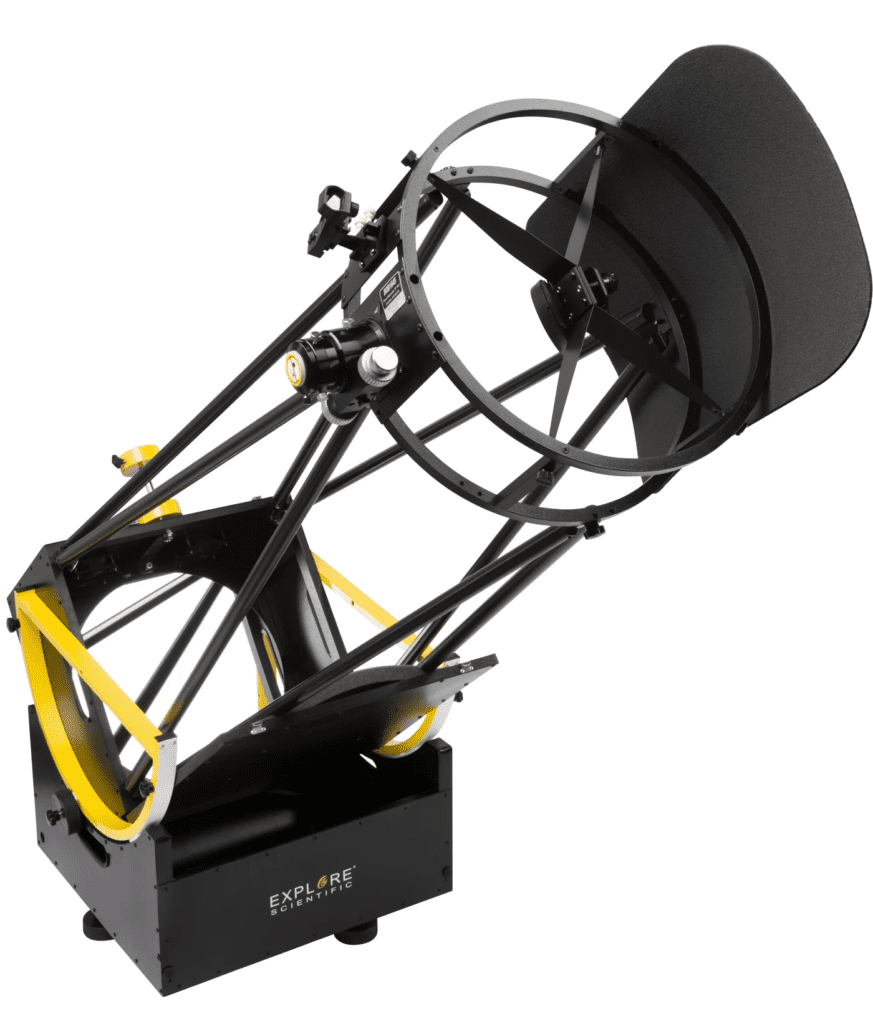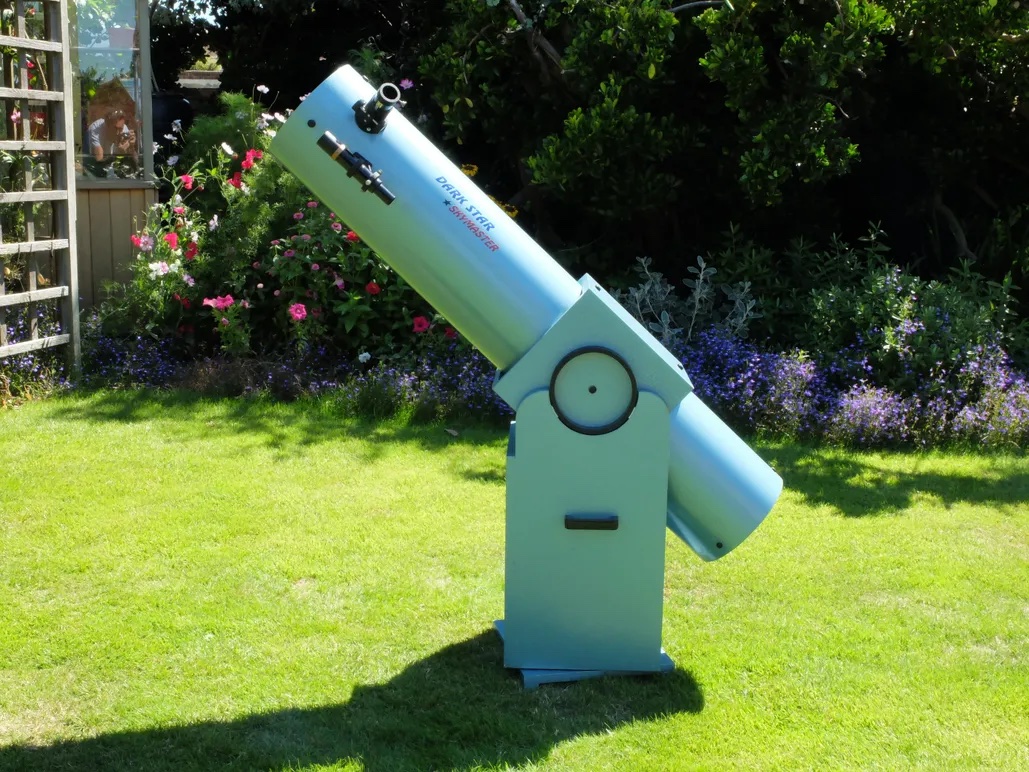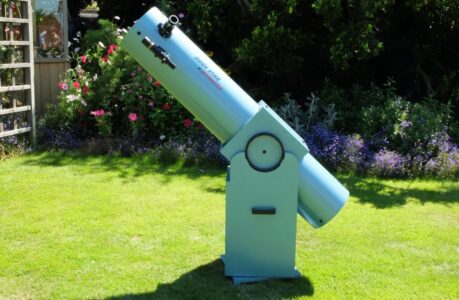Are you ready to embark on an astronomical journey like no other? If you’re passionate about stargazing and exploring the wonders of the night sky, you’re in for a treat. In this comprehensive guide, we will delve into the fascinating world of Dobsonian telescopes, revealing everything you need to know to make an informed purchase. Whether you’re a seasoned astronomer or a novice sky-watcher, this guide will equip you with the knowledge to choose the perfect Dobsonian telescope for your celestial adventures.
Chapter 1: What is a Dobsonian Telescope?
Understanding the Basics
Before we dive into the nitty-gritty details of Dobsonian telescopes, let’s start with the fundamentals. A Dobsonian telescope, often referred to simply as a “Dob,” is a type of reflecting telescope known for its simplicity and affordability. It was invented by John Dobson in the 1960s, and since then, it has become a favorite among amateur astronomers.
The heart of a Dobsonian telescope is its primary mirror, which collects and reflects light to form an image. This mirror is typically parabolic in shape, allowing for exceptional image quality. What sets Dobsonians apart is their altazimuth mount, a simple yet highly effective design that makes them easy to use, even for beginners.
Why Choose a Dobsonian Telescope?
Dobsonian telescopes are renowned for their incredible value for money. Here are some key reasons why you might consider investing in one:
1. Affordable Entry Point
Dobsonian telescopes offer an affordable entry into the world of amateur astronomy. They provide large apertures at a fraction of the cost compared to other telescope designs, making them an excellent choice for those on a budget.
2. Ease of Use
The altazimuth mount of a Dobsonian is intuitive and straightforward. This design makes it easy for beginners to navigate the night sky and track celestial objects effortlessly.
3. Impressive Aperture Sizes
Dobsonian telescopes are known for their large apertures, which allow for remarkable light-gathering capabilities. This means you can observe faint deep-sky objects and details on planets and the moon with clarity.
4. Minimal Maintenance
With fewer components and moving parts, Dobsonian telescopes require minimal maintenance. This makes them a hassle-free option for astronomy enthusiasts.
Now that you have a basic understanding of what a Dobsonian telescope is and why it might be the right choice for you, let’s explore the key features to consider when shopping for one.
Chapter 2: Features to Consider When Buying a Dobsonian Telescope
When shopping for a Dobsonian telescope, it’s essential to consider various factors to ensure you get the best telescope for your needs. Here are the key features to keep in mind:
1. Aperture Size
The aperture size is one of the most critical factors when choosing a Dobsonian telescope. It determines how much light the telescope can gather, directly impacting the clarity and brightness of the celestial objects you observe. Dobsonians are known for their large apertures, which can range from 6 inches to over 16 inches in diameter. Larger apertures provide better image quality, but they also make the telescope heavier and more cumbersome to transport.
2. Focal Length
The focal length of a Dobsonian telescope determines its magnification capabilities. A longer focal length results in higher magnification, which is ideal for planetary and lunar observations. However, for wide-field views of deep-sky objects, a shorter focal length is preferable. Consider your specific interests in astronomy when choosing the right focal length for your Dobsonian.
3. Mount Type
Dobsonian telescopes come with altazimuth mounts, which are known for their simplicity and ease of use. However, some models offer motorized or computerized mounts that can automatically track celestial objects, making them convenient for astrophotography. Decide whether you prefer manual tracking or automated tracking based on your observing goals.
4. Portability
Consider the portability of your Dobsonian telescope, especially if you plan to take it to different observing locations. Larger apertures can be bulky and heavy, so assess your ability to transport and set up the telescope comfortably.
5. Collimation
Collimation is the process of aligning the optical components of the telescope for optimal performance. Some Dobsonian telescopes have tools and mechanisms that make collimation easier. Ensure that the telescope you choose allows for precise collimation to maintain image quality.
6. Accessories
Check what accessories come with the Dobsonian telescope. Many models include eyepieces, finderscopes, and additional features like cooling fans or filter holders. Evaluate whether these accessories align with your observing needs or if you’ll need to invest in additional equipment.
7. Budget
Dobsonian telescopes are known for their affordability, but prices can vary significantly depending on the aperture size, brand, and included features. Set a budget that suits your preferences and explore telescopes within that price range.
Chapter 3: Top Dobsonian Telescope Models
Now that you understand the essential features to consider, let’s explore some of the top Dobsonian telescope models available on the market today. Each of these telescopes offers unique advantages, catering to different preferences and needs.
1. Sky-Watcher Classic 8″ Dobsonian

Aperture: 8 inches
Focal Length: 1200mm
Mount: Altazimuth
Included Accessories: 25mm and 10mm eyepieces, 2x Barlow lens, finderscope
The Sky-Watcher Classic 8″ Dobsonian is a popular choice among astronomers due to its excellent balance between aperture size and portability. With an 8-inch aperture, this telescope provides stunning views of celestial objects while remaining relatively easy to transport. The included accessories make it a comprehensive package for both beginners and experienced stargazers.
Price: Check the latest price here
2. Orion SkyQuest XT10 Classic Dobsonian Telescope

Aperture: 10 inches
Focal Length: 1200mm
Mount: Altazimuth
Included Accessories: 25mm and 10mm eyepieces, 9×50 finderscope, Collimation cap
For those seeking more light-gathering power, the Orion SkyQuest XT10 Classic Dobsonian is an excellent choice. With its 10-inch aperture, it’s capable of revealing incredible details on planets and deep-sky objects. The included collimation cap ensures that you can maintain precise optical alignment for exceptional performance.
Price: Check the latest price here
3. Zhumell Z10 Deluxe Dobsonian Reflector Telescope

Aperture: 10 inches
Focal Length: 1270mm
Mount: Altazimuth
Included Accessories: 30mm and 9mm eyepieces, 2-inch dual-speed Crayford focuser, 8×50 finderscope
The Zhumell Z10 Deluxe Dobsonian is known for its premium features, including a dual-speed focuser for precise focusing and a 2-inch eyepiece for immersive views. The 10-inch aperture ensures remarkable light-gathering capabilities, making it a great choice for both visual observation and astrophotography.
Price: Check the latest price here
4. Explore Scientific FirstLight 16″ Dobsonian

Aperture: 16 inches
Focal Length: 1825mm
Mount: Altazimuth
Included Accessories: 28mm 2-inch eyepiece, 10mm 1.25-inch eyepiece, Red-dot finder
If you’re looking for the ultimate light-gathering power, the Explore Scientific FirstLight 16″ Dobsonian is a beast of a telescope. With its massive 16-inch aperture, it’s capable of revealing intricate details on celestial objects and providing breathtaking views of the cosmos. While it’s larger and heavier, it’s an excellent choice for serious astronomers.
Price: Check the latest price here
Chapter 4: Maintenance and Care
Owning a Dobsonian telescope requires some basic maintenance to ensure it continues to perform at its best. Here are some tips to keep your telescope in top condition:
1. Collimation
Regularly check and adjust the collimation of your Dobsonian telescope. Proper collimation ensures that the optical components are aligned correctly, resulting in sharp and clear images. Many telescopes come with collimation tools, making this process relatively straightforward.
2. Cleaning
Keep your telescope’s optics clean by using a soft brush or compressed air to remove dust and debris. If necessary, use a specialized optical cleaning solution and a microfiber cloth for more thorough cleaning. Be gentle to avoid scratching the lenses or mirrors.
3. Storage
When not in use, store your Dobsonian telescope in a dry and dust-free environment. Cover it with a protective telescope cover or a cloth to prevent dust buildup. Avoid exposing it to extreme temperatures or humidity.
4. Lubrication
If your telescope has moving parts, such as the altitude and azimuth bearings, apply a suitable lubricant as recommended by the manufacturer. This ensures smooth movement and reduces wear and tear.
Chapter 5: Dobsonian Telescopes for Astrophotography
While Dobsonian telescopes are primarily designed for visual observation, some enthusiasts want to venture into astrophotography. While not the ideal choice for deep-space imaging, Dobsonians can capture impressive lunar and planetary photographs. Here’s what you need to consider for astrophotography with a Dobsonian:
1. Prime Focus Astrophotography
One of the simplest ways to start astrophotography with a Dobsonian is through prime focus photography. This involves attaching a camera directly to the telescope’s focuser. To do this, you’ll need a T-ring specific to your camera model and a T-adapter compatible with your telescope.
2. Planetary Imaging
Dobsonian telescopes with longer focal lengths are well-suited for planetary imaging. Use a dedicated planetary camera or a smartphone adapter to capture detailed images of planets like Jupiter and Saturn. For best results, consider stacking multiple frames to reduce noise and enhance sharpness.
3. Lunar Photography
The moon is an excellent target for Dobsonian astrophotography. Capture stunning lunar images by attaching a camera to your telescope and experimenting with different exposure settings. Lunar photography is a rewarding way to explore the capabilities of your Dobsonian.
Chapter 6: Where to Buy a Dobsonian Telescope
When it comes to purchasing a Dobsonian telescope, you have several options. Here are some reputable sources where you can find a wide selection of Dobsonian models:
1. Telescope.com
Telescope.com, also known as Orion Telescopes & Binoculars, is a trusted source for Dobsonian telescopes and astronomy accessories. They offer a variety of models, including those from their own Orion brand.
2. Amazon.com
Amazon offers a vast selection of Dobsonian telescopes from various brands and sellers. You can read customer reviews and compare prices to find the best deal.
3. High Point Scientific
High Point Scientific specializes in telescopes and astronomy gear. They carry a range of Dobsonian telescopes and provide expert advice to help you make an informed choice.
4. Local Astronomy Stores
Consider visiting your local astronomy store, if available. They often have knowledgeable staff who can provide guidance and hands-on assistance.
Chapter 7: Conclusion
In this extensive guide, we’ve explored the fascinating world of Dobsonian telescopes, from their basic principles to the top models available on the market. We’ve discussed essential features to consider when purchasing one, maintenance tips, and even touched on astrophotography possibilities. Armed with this knowledge, you’re now ready to embark on your celestial journey with confidence.
Remember that the universe is waiting to reveal its secrets to you, and a Dobsonian telescope can be your gateway to the cosmos. So, pick the perfect Dobsonian, set it up under the starry night sky, and get ready to explore the wonders of the universe like never before.
Happy stargazing!

